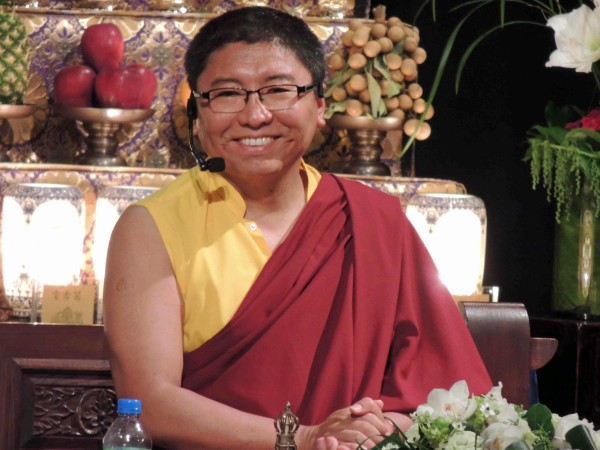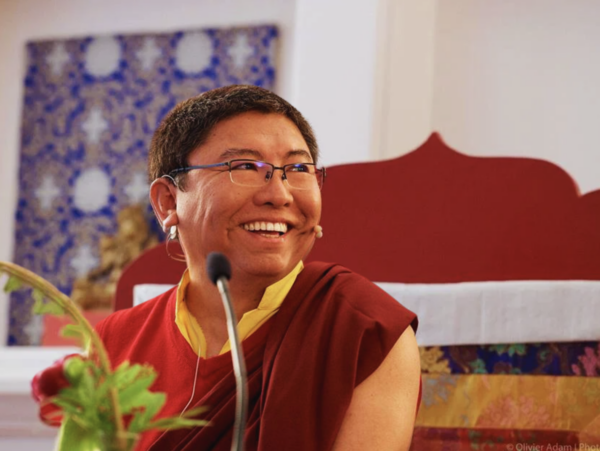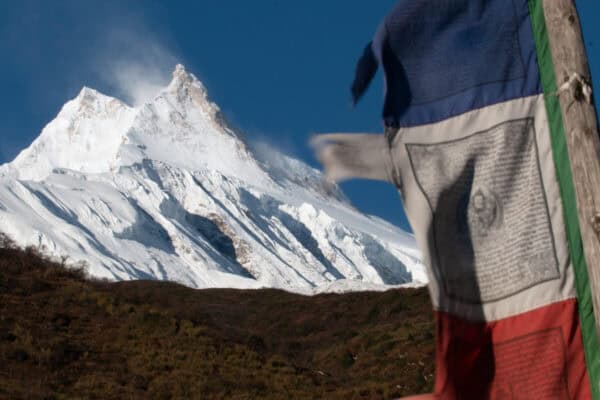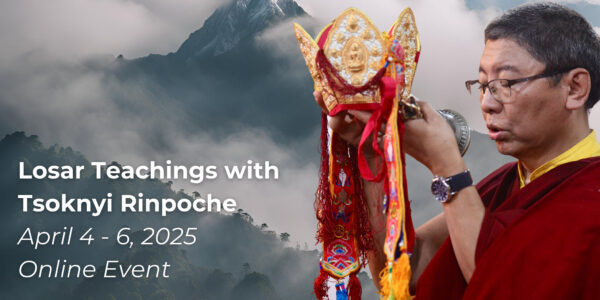Visiting Tibetan Buddhist Master Explains the Benefits of Meditation
(Note: This article appeared in Hong Kong’s newspaper, the South China Morning Post on November 25, 2013, after Rinpoche’s historic teachings there.)
“As the practice of meditation gains mainstream acceptance, a visiting Tibetan Buddhist master tells Chan Tse Chueen (tsechueen.chan@scmp.com) how it has helped him.
“For someone regarded by the Tibetan Buddhist faithful as a reincarnated master teacher of the dharma, Tsoknyi Rinpoche is remarkably frank about his own human frailties. It took him seven years to stop drinking a certain popular brand of soda, which he knew was bad for his health.
“This story, which he shared last month with a Hong Kong audience at a series of talks on death and meditation, is typical of his teaching style–honest, amusing and direct. It makes accessible the lofty topics of his concerns: the limitless potential of our mind, the nature of reality, and happiness.
“His soda anecdote speaks to those of us who find it difficult to bridge the gap between knowledge and action, which happens, he explains, when the head fails to communicate with the heart. This disconnect, and how meditation can help us to bridge that gap, is a message Tsoknyi Rinpoche carries with him to lectures and retreats in Europe, America and Asia.
“We don’t have to live our life bound by the habits of feelings and behaviour which we have developed over the years; we can choose otherwise, he says, by re-educating ourselves through the practice of meditation.
“In the crowded market today for self-help programmes designed to improve health and well-being, meditation is gaining mainstream credibility. Mindfulness training is now an acceptable tool in psychotherapy, and its ability to “rewire” our brain has become more fact than fiction, thanks to advances in neuroscience research that demonstrate it. Benefits of meditation found through various studies include reduced stress; better concentration; a more resilient mental outlook; lower risk of death, heart attack and stroke in mental patients; reduced loneliness in older adults; and relief from chronic inflammation.
“More research is being conducted. In one study that investigates meditation’s effect on stress, announced a fortnight ago, the Scripps Translational Science Institute in San Diego teamed up with the Chopra Foundation and the Chopra Centre for Wellbeing to collect physiological data from 40 meditators aged 20 to 72, including blood pressure, heart rate, brain activity and other vital signs.
“The study might, for the first time, demonstrate the immediate influence of meditation on blood pressure and markers of stress, and eventually guide better and more individualised treatments of high blood pressure, chronic pain or other health conditions, said the Scripps institute’s director, Dr Eric Topol.
“It’s no wonder stressed-out urbanites are turning to meditation courses for relief. It’s unknown how many practise meditation in Hong Kong, but talks and courses featuring well-known visiting teachers, such as Zen monk and author Thich Nhat Hanh, attract full-house crowds. A search online also shows a wide range of courses available here, from the traditional to New Age. Some methods recommend visualisation or chanting, while others teach a varying combination of paying attention to our breath and sensory perceptions. The techniques differ, but the purpose of meditation remains the same: to be aware of our experience as it is, without judgment.
“We live in a society of speed, and have become accustomed to performing the cognitive process of perception-judgment-visceral reaction in a sort of mental shorthand. Before our head can say “wait a minute”, we are already at the mercy of our feelings. With meditation, Tsoknyi Rinpoche says, we slow down the leap from perception to judgment, giving us a chance to change our reaction through experience. We learn to “be” before we “run”, so we can be steady on our feet even when we live life at full speed.
“In Tibetan Buddhist tradition, reincarnation is accepted as part of reality. The first Tsoknyi Rinpoche, a teacher of the Drukpa Kagyu tradition (“drukpa” being the Tibetan word for “dragon”), was born in the mid-19th century. His third incarnation was found in Nepal–an eight-year-old boy born in 1966 into a family of respected meditators.
“The transition from boy to monk was not at first easy. As Tsoknyi Rinpoche put it in his 2012 book, Open Heart, Open Mind, “One day you’re a boy playing games with local children; the next day you’re a dragon”.
“At the monastery in India where he was sent for training after he turned 12, he grew to enjoy the rigours of study, but could not reconcile his free-spirited nature with the boundaries set by monastic life. So, at 22, he asked to be released from his vows.
“Tibetan Buddhism has a tradition of lay teachers, so his decision was perhaps not as dramatic as it sounds. His father Urgyen Rinpoche, after all, was a renowned meditator who taught and raised a family at the same time. So Tsoknyi Rinpoche left the monkhood, got married and continued to teach. “I had the teaching, which I really believe in. It doesn’t matter whether you’re a monk or a householder, the mind is important, the way we think is important,’ he says. ‘I carry my meditation training into my life, including my marriage.’
“The father of two daughters learns by practice, as lay people do. This means trying to balance his family life with his duties as a teacher, which includes overseeing two nunneries in Nepal and the Pundarika Foundation he founded, and being on the road four to five months a year.
“It means figuring out how to keep his marriage healthy and fulfilling. In the end, it comes down to our ability to connect with ourselves. ‘There are three kinds of love: basic love; normal love, which involves giving and taking; and boundless love, which is love with compassion, a spiritual kind of love. In any relationship, we must first have within ourselves what I call essence love. It’s not self-love, but a sort of ‘okayness’ within yourself that has nothing to do with your partner, your parents or anybody else. You feel a warmth inside, you feel good but not because of something. If you have that, your relationship with your wife–with anybody– will go well.’
“His teaching is peppered with stories from his life experience and interactions with people. He talks about his parenting experience, for example, in his book and occasional column for The Huffington Post. Tsoknyi Rinpoche is undoubtedly counted among a new breed of meditation teachers who have not only made the 2,500-year-old insight of the Buddha relevant in modern life, but also taken it out of the meditation halls and into the world. He is convinced that the practice of meditation, which helps us to become “fully, healthily human”, cannot be separated from our daily conduct. The meditation techniques he teaches therefore fit easily into the rhythm of city life. ‘Or do you like to meditate only on a cushion in your room? No point, no? You can’t stay in the room forever,’ he told his Hong Kong audience at his talk. ‘I hope you have a life–a life besides sitting on a cushion.’
“But given the many methods available here and online, how do we choose one that suits us? His advice is to try each and see; if it works, our life will become better. The ultimate purpose of meditation is liberation from samsara, the cycle of death and rebirth. But if enlightenment is a step too far, meditation can at least help us to heal the bridge between our head and heart.
“‘If we are living in a nightmare, at least we try and turn it into a healthy dream,’ he says. ‘We’re still asleep, we’ve not become awakened like Buddha, but at least we’re no longer in a nightmare.’”




